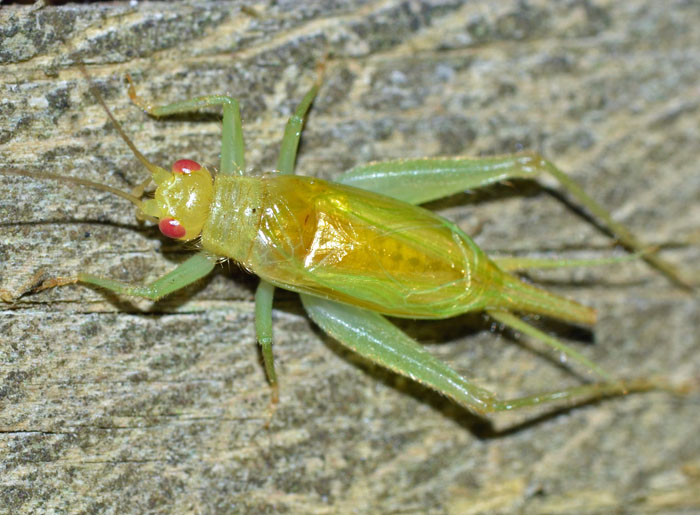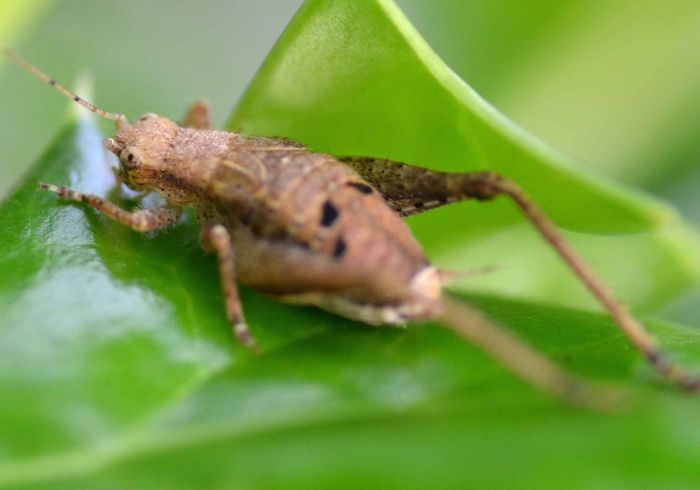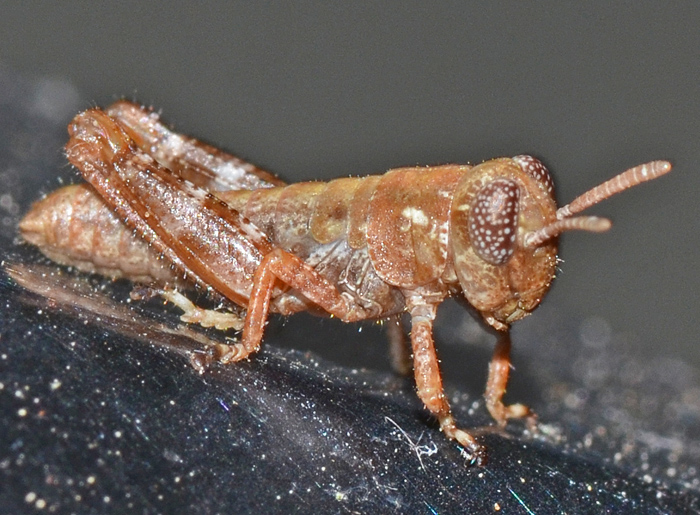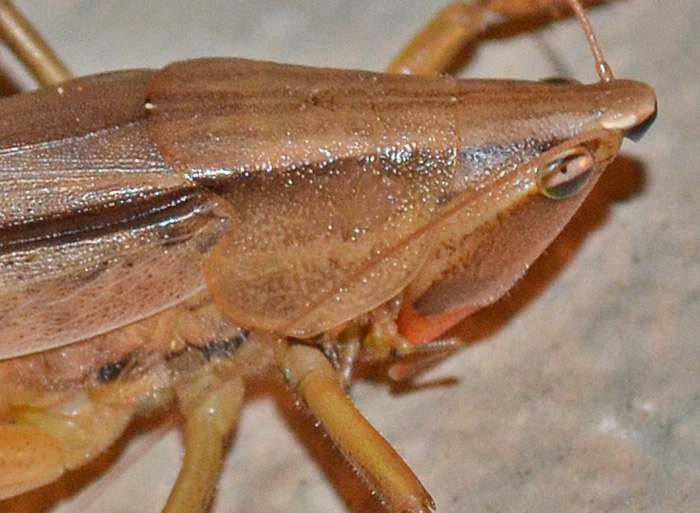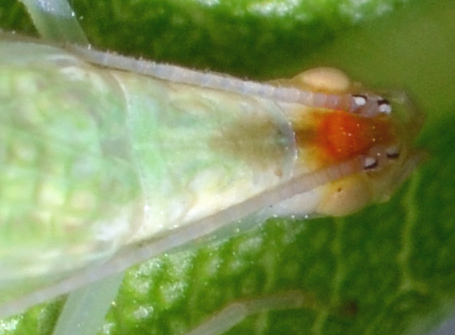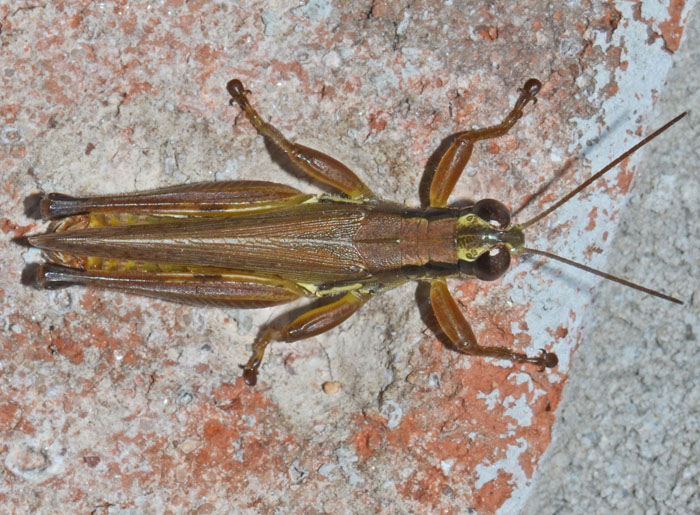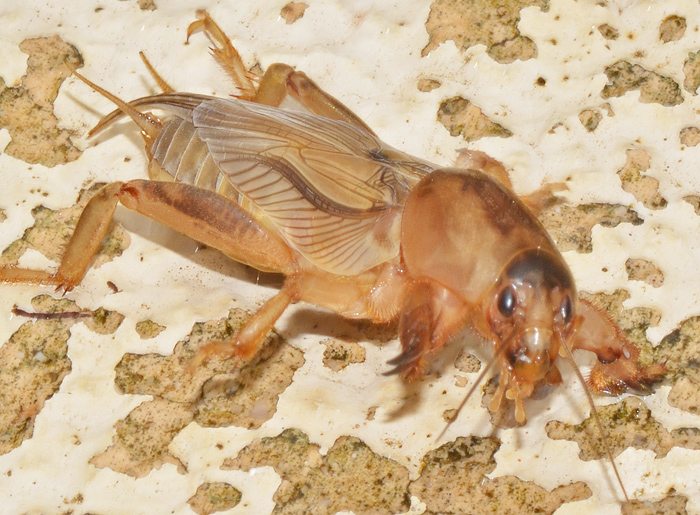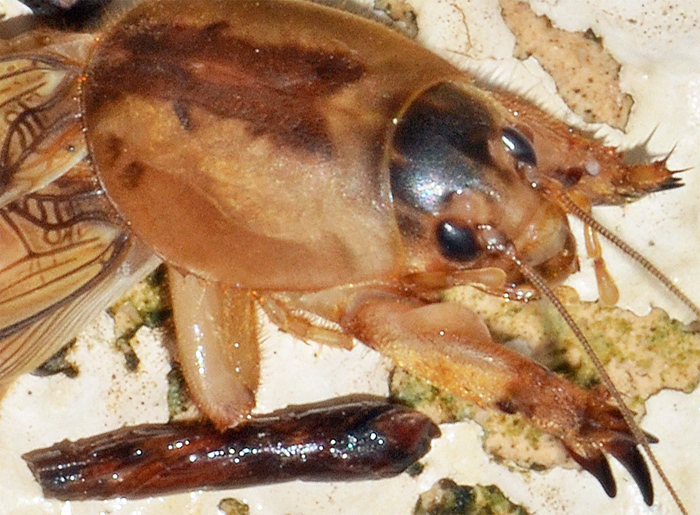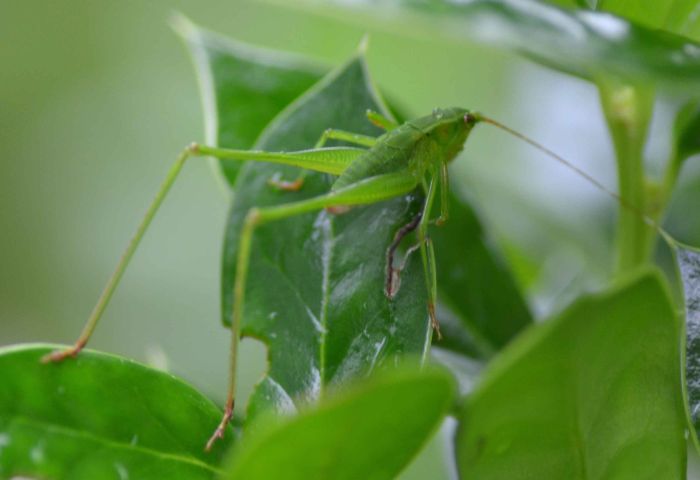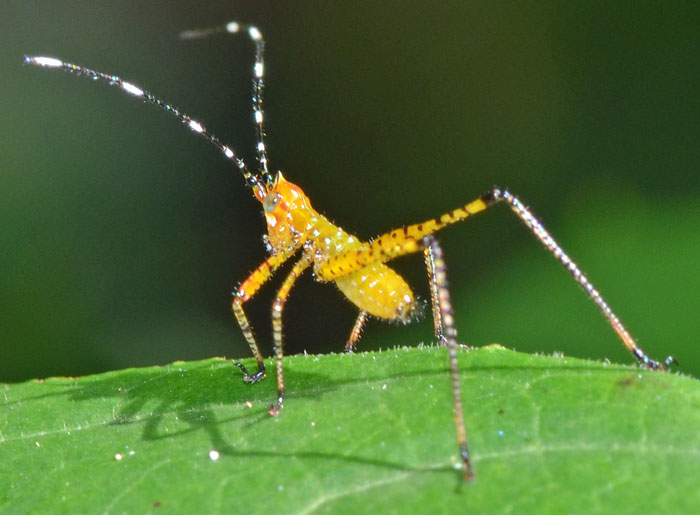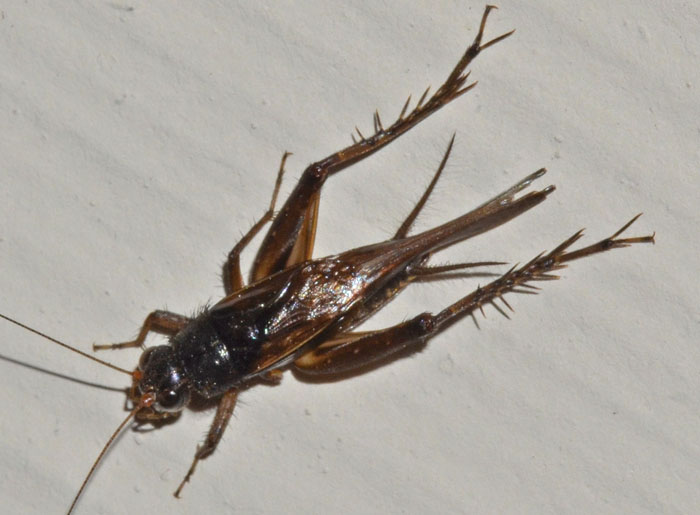 Allonemobius fasciatus ♂. | This is a tentative ID for this ground cricket. bug guide (this photo): http://bugguide.net/node/view/689732 | ||
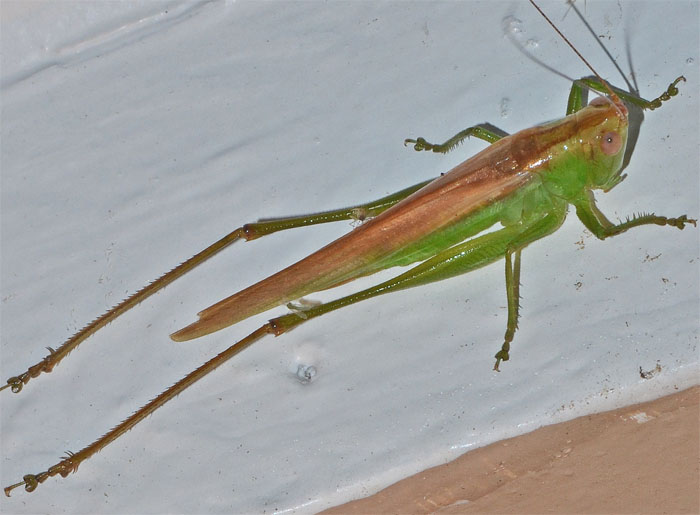 Conocephalus fasciatus (Slender Meadow Katydid) ♀. | Conocephalus fasciatus fasciatus is a large but slender, green and brown katydid that can be found across the US in grassy areas (fields, meadows, open woodlands). It has long and narrow wings that extend well beyond its posterior. bug guide (this photo): http://bugguide.net/node/view/1125592 UF (with sound files): http://entnemdept.ufl.edu/walker/buzz/231a.htm | ||
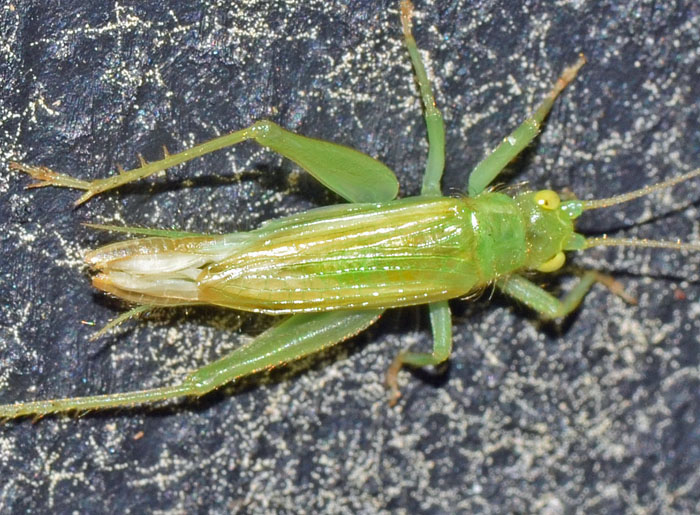 Cyrtoxipha columbiana (Columbian Trig) ♀. | In our area there is seemingly only one species in this genus. I couldn't find any additional information on this Columbian Trig (Cyrtoxipha columbiana) with the exception of the UF sound recordings. The small photo shows a male.
bug guide: http://bugguide.net/node/view/162622 UF (with sound files): http://entnemdept.ufl.edu/walker/buzz/622a.htm | ||
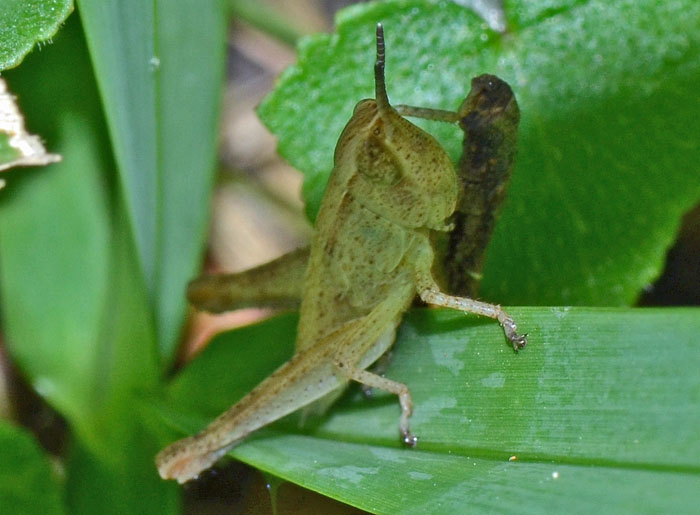 Dichromorpha viridis (Short-winged Green Grasshopper). | Not a great photo but here is the Short-winged Green Grasshopper. Their color varies from green to brown. Males can have two distinct colors whereas females don't. The face is slanted. They are often found in grasses and on lawns. bug guide (this photo): http://bugguide.net/node/view/9031 | ||
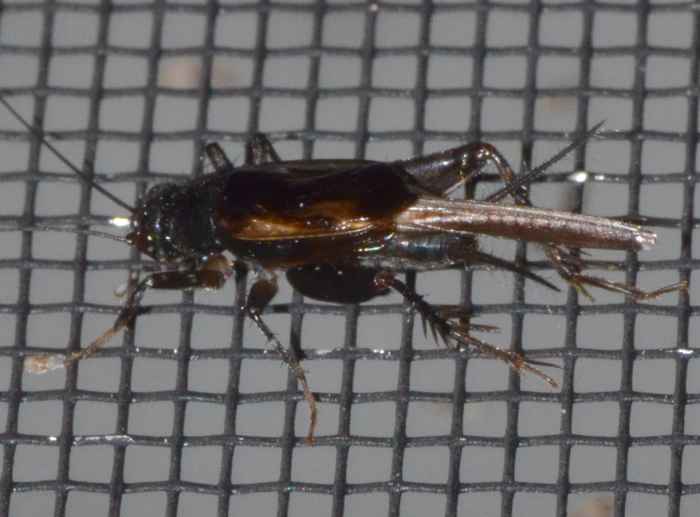 Eunemobius sp. (Even-spurred Ground Cricket) ♂. | A male of Eunemobius sp. bug guide (this photo): http://bugguide.net/node/view/578713 UF (with sound file): http://entnemdept.ufl.edu/walker/buzz/533a.htm | ||
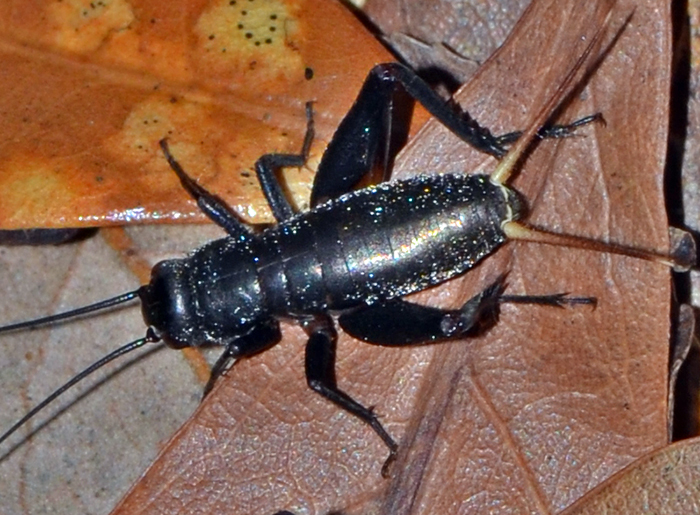 Gryllus sp. (Field Cricket). | Field crickets are difficult to identify down to the species level. In the US, Gryllus has 16 species which are typically 15-30 mm long and darkly colored. Until the 1950s, native field crickets in eastern North America were all assigned to a single species, Acheta assimilis. Although regional variation in calling song and life history were noted, no morphological characters could be found to reliably distinguish these variants. bug guide (this photo): https://bugguide.net/node/view/1547032 wikipedia: https://en.wikipedia.org/wiki/Gryllus | ||
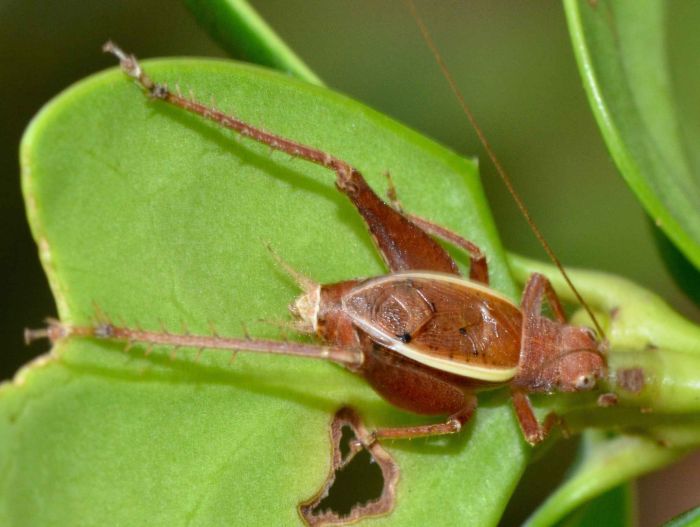 Hapithus agitator (Restless Bush Cricket). | This is the Restless Bush Cricket (Hapithus agitator). These crickets eat plant matter including citrus leaves and fruits. The smaller photo shows an immature, female of the same species. Females have been reported to eat the male's forewings during copulation.
bug guide (large photo): http://bugguide.net/node/view/559626 bug guide (small photo): http://bugguide.net/node/view/556303 UF: http://entnemdept.ufl.edu/walker/buzz/671a.htm | ||
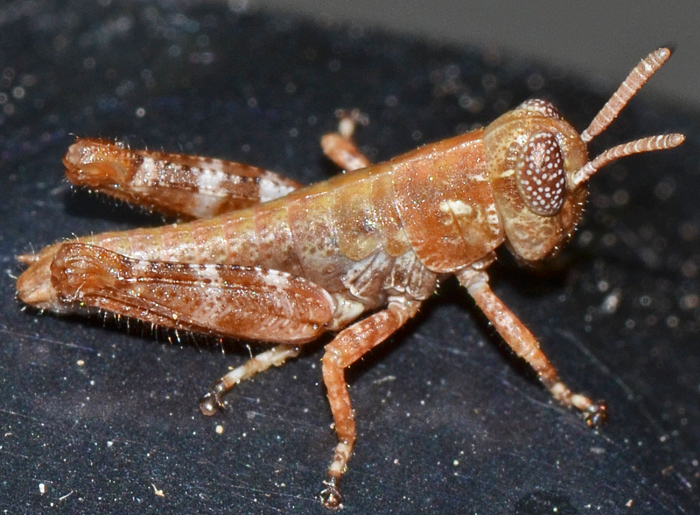 Melanoplus sp.. | Possibly a nymph of Melanoplus punctulatus. The genus has 239 species in North America. An infamous (now extinct) representative is the Rocky Mountain locust which caused significant pests in the 19th century Great Plains. Follow the second link to a vivid report about these swarms that apparently reached sizes of 12.5 trillion insects.
bug guide (these photos): http://bugguide.net/node/view/1224020 history net - 1874: http://www.historynet.com/1874-the-year-of-the-locust.htm | ||
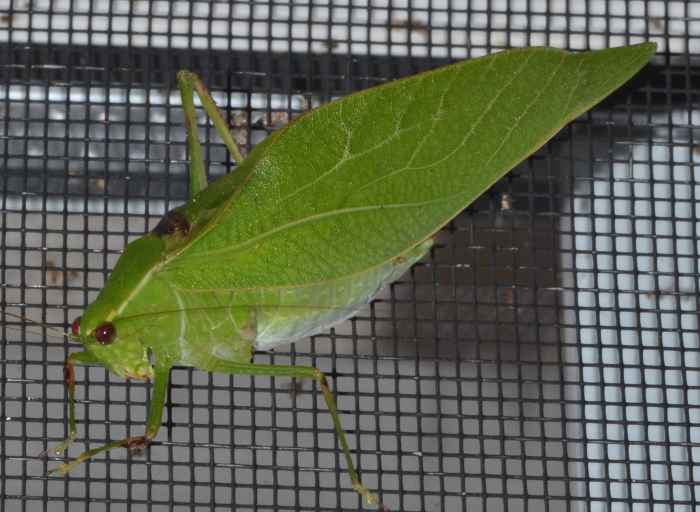 Microcentrum retinerve (Lesser Angle-Wing Katydid) ♂. | This big boy is a Lesser Angle-Wing Katydid (Microcentrum retinerve). They can be found in the Eaatern states, often call from trees, and are attracted by lights like this specimen. The similar species M. rhombifolium is even larger. bug guide (this photo): http://bugguide.net/node/view/578698 UF (with sound file): http://www.entnemdept.ufl.edu/walker/buzz/032a.htm | ||
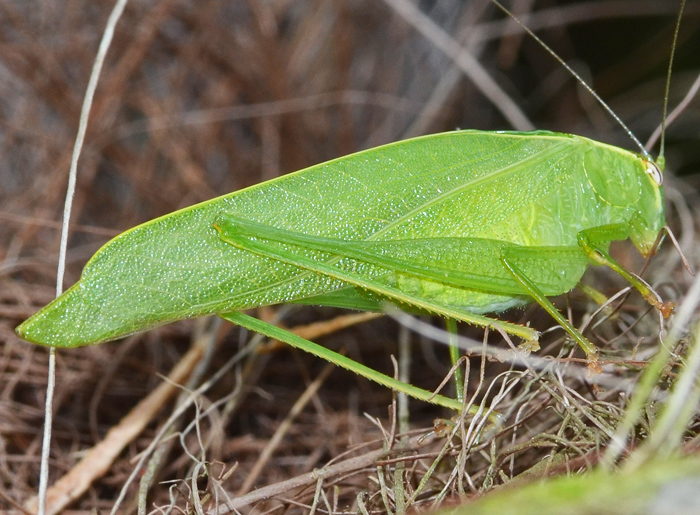 Montezumina modesta (Modest Katydid). | I found this leaf-like bug on a palm tree where it really didn't blend in too well. It is the Modest Katydid (Montezumina modesta). Notice the characteristic dark stripe across the eyes. The UF link provides audio files of the chirping. In North Florida, June is the prime month to find this katydid. bug guide (this photo): http://bugguide.net/node/view/1235025 UF: http://entnemdept.ifas.ufl.edu/walker/buzz/041a.htm | ||
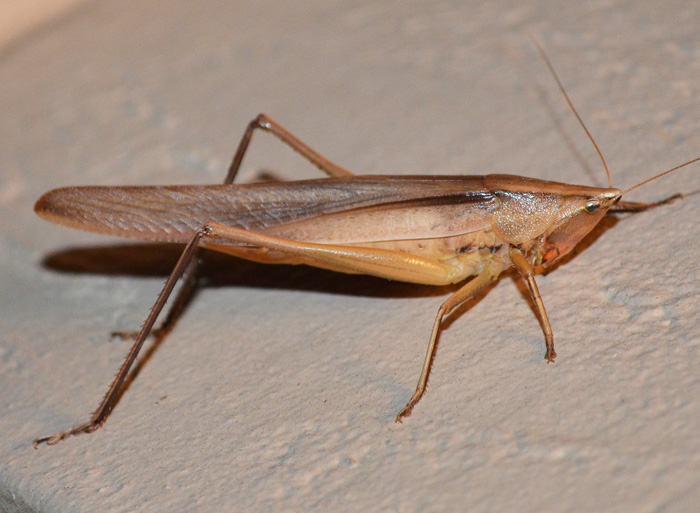 Neoconocephalus triops (Broad-tipped Conehead) ♀. | A huge katydid. I spotted this female on our house wall during the early evening hours. Both sexes come to lights but they only occasionally eat other insects. Another common name for this species is "Three-eyed Conehead Katydid". The third eye, however, is only a dark spot which I fail to resolve on my photos. In Florida, the males of this species sing from February to May and from July to August.
bug guide (this photo): http://bugguide.net/node/view/853425 | ||
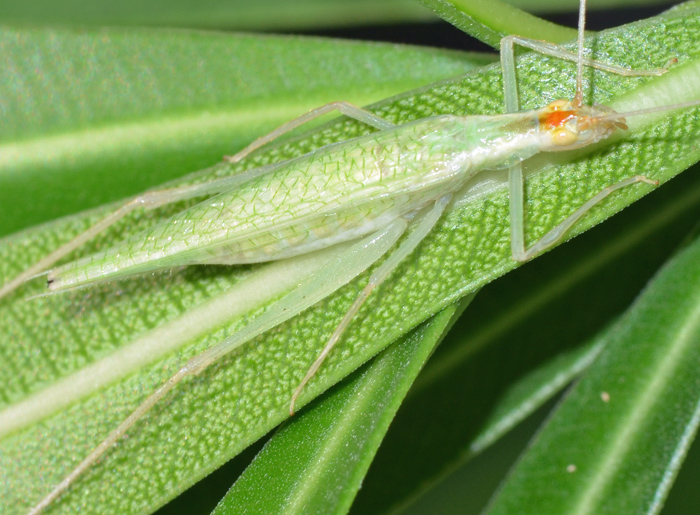 Oecanthus niveus (Narrow-winged Tree Cricket). | I found this nicely camouflaged tree cricket underneath an oleander leaf. Most of these species can be identified by inspection of the first two antennal segments. This one has a characteristic orange patch on the head and translucent limbs, strongly suggesting O. niveus. Tree cricket nymphs are essentially small versions of the adults with external wing buds.
bug guide (this photo): http://bugguide.net/node/view/940152 Nancy Collins (great information): http://oecanthinae.com/3901.html | ||
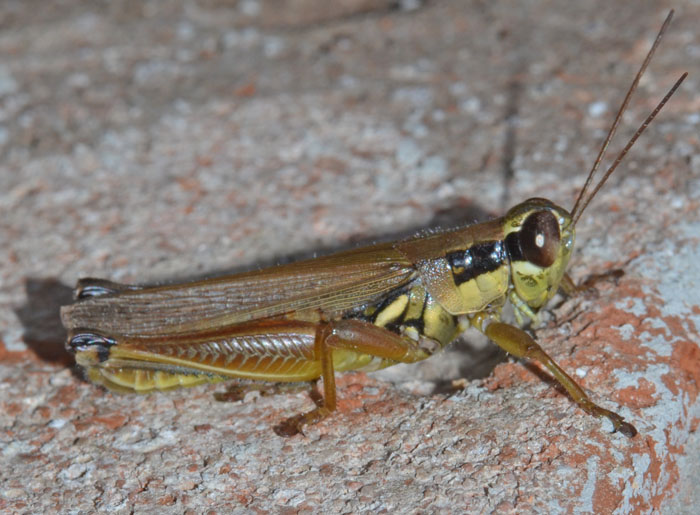 Paroxya atlantica (Atlantic Grasshopper) ♂. | A spur-throated grasshopper with the lovely name Paroxya atlantica. Bugguide.net states "Evidence suggests that it may be limited to areas with sandy soils." Well, no sandy soils here, just heavy clay.
bug guide (these photos): http://bugguide.net/node/view/707653 | ||
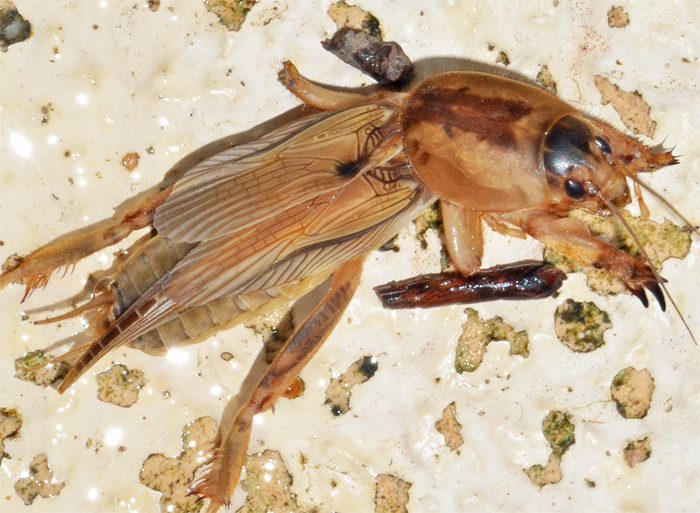 Scapteriscus vicinus (Tawny Mole Cricket). | These mole crickets feed on animal as well as plant material and are sometimes a serious pest of turfgrasses and crops especially tomatoes and strawberries in the seedling stage. They arrived here from South America over 100 years ago. Males call from the enlarged entrance to their underground burrows to attract females at about 130 Hz during the first 90 minutes after sunset.
bug guide (this photo): http://bugguide.net/node/view/1206304 UF: http://entnemdept.ufl.edu/walker/buzz/s341lw81.pdf | ||
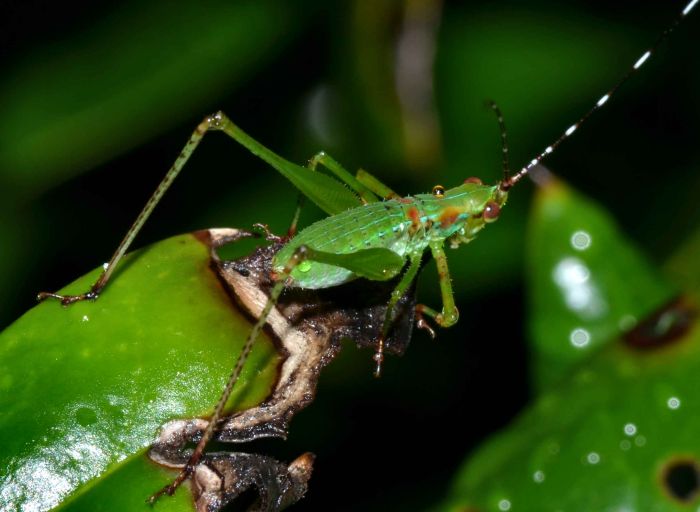 Scudderia sp. (Scudder's Bush Katydid) - imm. | Katydid nymphs are difficult to identify. The likely genus Scudderia has eight species in North America. See the second and third reference for a discussion of the banded antennae. The small images show other specimens.
bug guide: http://bugguide.net/node/view/23277 bug guide: http://bugguide.net/node/view/9997 bug guide: http://bugguide.net/node/view/153674 |

